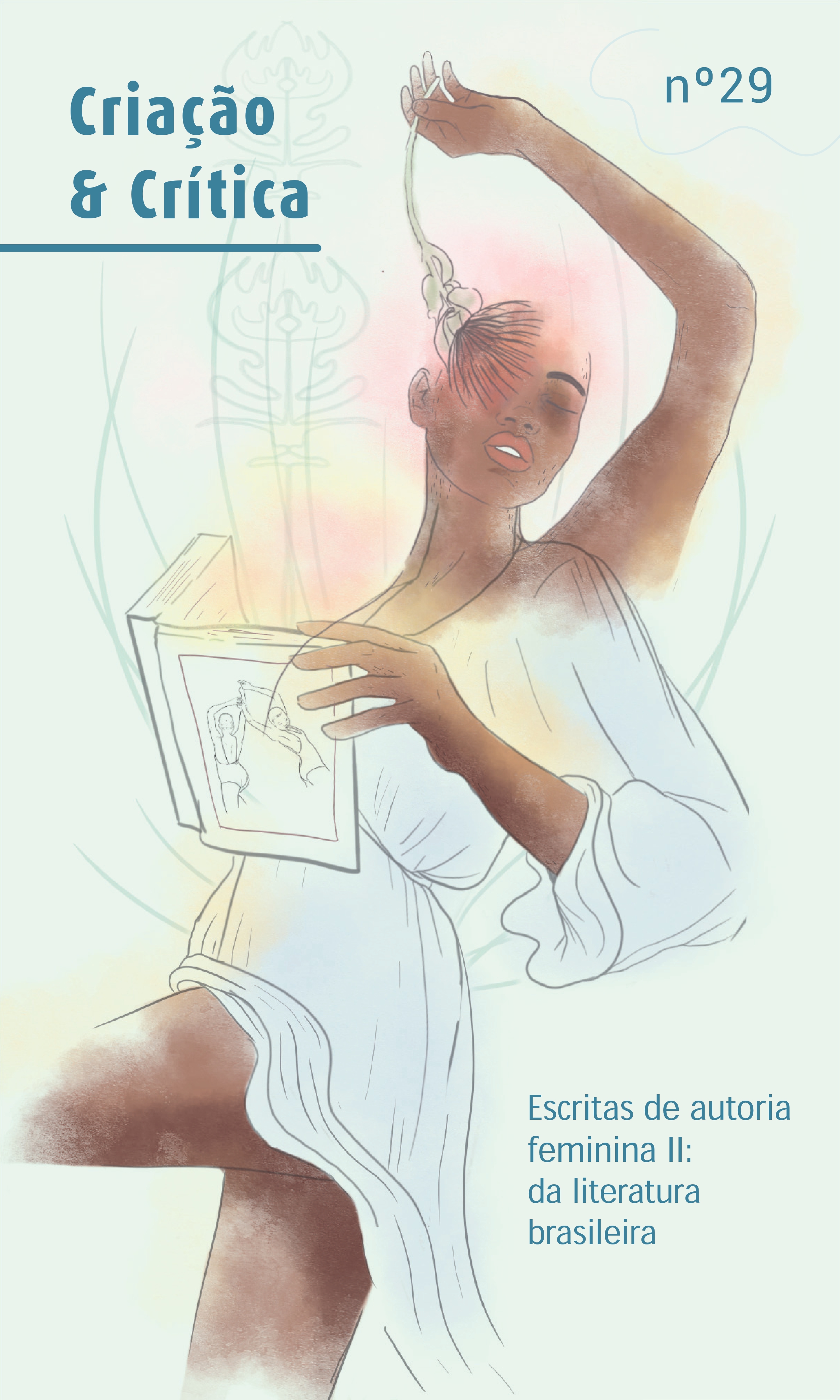“But after all, what do women want?" Women's place in the work Em Surdina
DOI:
https://doi.org/10.11606/issn.1984-1124.i29p105-120Keywords:
Woman, Criticism, Tradition, 1930s, Lúcia Miguel PereiraAbstract
Em Surdina (1933) is the second novel published by Lúcia Miguel Pereira. As Luís Bueno (2006) explains, this work has a strong documental tendency which is common in the social novels of the 1930s. Thus, it highlights the contradictions of time, from the breakdown of values, turning into habits, to the mediating role of work in the construction of identities, the economy and international relations. However, the most evident dialogue with the context can be seen in the characters' posture, especially in some women’s fear of living life. In the narrative, there are characters that experience different types of sensations; however, the narrative is led by Cecília whose existence has been questioned since the marriage proposal. If in the traditional discourse, marriage is the man’s form of control over the woman, conversely, in this narrative, marriage is considered in a critical way as the only way for women to enjoy life. This invitation to seize the day provokes in Cecília a certain questioning about herself and about the traditional context that conditions the practices, especially of women. Therefore, the narrative presents us with mechanisms for reflecting on the woman's way of life and the place they occupy in that society, both fictional and real.
Downloads
References
ALVES, Branca Moreira; PITANGUY, Jacqueline. O que é feminismo. 3. ed. São Paulo: Brasiliense, 1983.
BADINTER, Elisabeth. XY: sobre a identidade masculina. Rio de Janeiro: Rocco, 1993.
BEAUVOIR, Simone de. O segundo sexo: a experiência vivida. Trad. Sérgio Milliet. Rio de Janeiro: Nova Fronteira, 1980.
BUENO, Luís. Uma história do romance de 30. São Paulo: Editora da Universidade de São Paulo; Campinas: Editora da Unicamp, 2006.
COELHO, Nelly Novaes. “A literatura feminina no Brasil- das origens medievais ao século XX”. In: DUARTE, Constância; DUARTE, Eduardo de Assis; BEZERRA, Kátia. (Orgs.)
Mulher e literatura: I- gênero e representação. Teoria, história e crítica. Belo Horizonte: Ed. UFMG, 2002. Coleção Mulher & Literatura.
PRIORE, Mary del. História do amor no Brasil. São Paulo: Contexto, 2005.
FREUD, Sigmund. “A feminidade”. Trad. Odilon Galloti, Isaac Izecksohn e Gladstone Parente. In: FREUD, Sigmund. Obras completas de Sigmund Freud. Rio de Janeiro: Delta, s.d. p.117-141.
GIULANI, Paola Cappellin. “Os movimentos de trabalhadoras e a sociedade brasileira”. In: PRIORE, Mary del. História das mulheres no Brasil. 2 ed. São Paulo: Contexto, 1997.
NYE, Andrea. Teorias feministas e as filosofias do homem. Trad. Nathanael C. Caixeiro. Rio de Janeiro: Recorde: Rosa dos tempos, 1995.
PEREIRA, Lúcia Miguel. Em surdina. Rio de Janeiro: Ariel, 1933.
RAGO, Margareth. “Trabalho feminino e sexualidade”. In: DEL PRIORE, Mary. História das mulheres no Brasil. 2 ed. São Paulo: Contexto, 1997.
WANDERLEY, Márcia Cavendish. “Lúcia Miguel Pereira: do conservadorismo ao liberalismo”. In: RAMALHO, Christina (Org.) Literatura e feminismo: Propostas teóricas e reflexões críticas. Rio de Janeiro: Elo Editora, 1999. p.73-84.
Downloads
Published
Issue
Section
License
Copyright (c) 2021 Edwirgens Aparecida Ribeiro Lopes de Almeida

This work is licensed under a Creative Commons Attribution-NonCommercial-ShareAlike 4.0 International License.
Authors who publish with this journal agree to the following terms:
- Authors retain copyright and grant the journal right of first publication with the work simultaneously licensed under a Creative Commons Attribution License that allows others to share the work with an acknowledgment of the work's authorship and initial publication in this journal.
- Authors can enter into separate, additional contractual arrangements for the non-exclusive distribution of the journal's published version of the work (e.g., post it to an institutional repository or publish it in a book), with an acknowledgment of its initial publication in this journal.
- Authors are permitted and encouraged to post their work online (e.g., in institutional repositories or on their website) before and during the submission process, as it can lead to productive exchanges, as well as earlier and greater citation of published work (See The Effect of Open Access).



